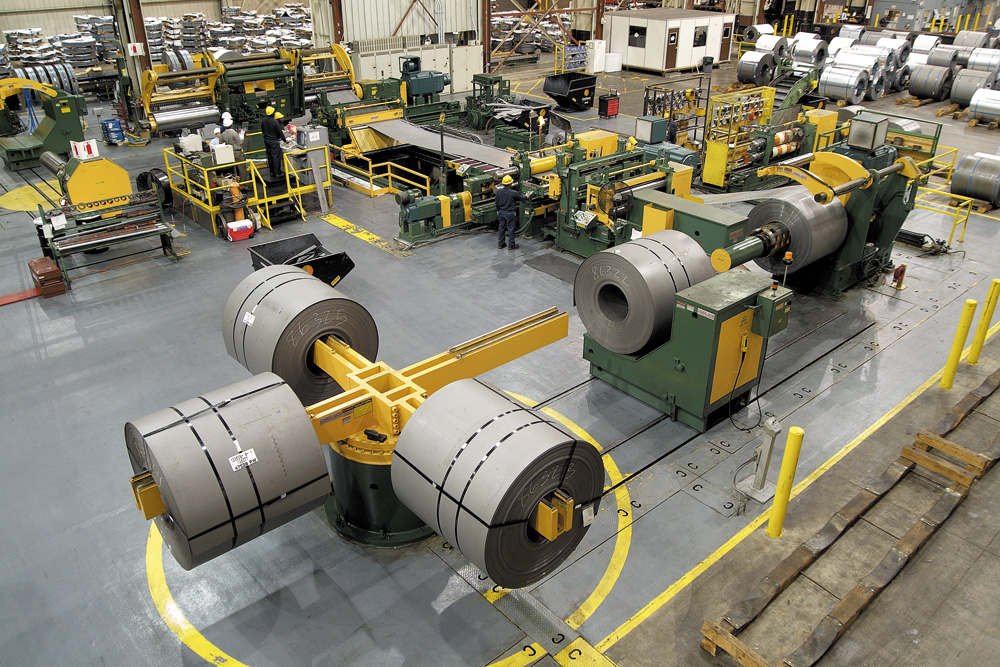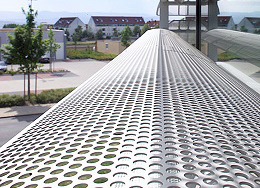|
Concerned cheap Chinese steel entering the Vietnam market is constantly being put out recently. Why Vietnam excessive deficit back from China? The study, "The Future for Vietnam's steel industry?" By a group of authors have given important answers to this problem. Steel has always been considered a strategic sector of Vietnam since the mid-20th century to the present. Policies focused on state enterprises (SOEs), especially the Vietnam Steel Corporation (VNSTEEL) with desired business will become a "POSCO" of Vietnam. However, Vietnam's steel industry in general, in particular VNSTEEL a contrasting picture than the story of Korea and POSCO. This is a very expensive lesson for us.
Concerned cheap Chinese steel entering the Vietnam market is constantly being put out recently. Why Vietnam excessive deficit back from China? The study, "The Future for Vietnam's steel industry?" By a group of authors have given important answers to this problem.
Steel has always been considered a strategic sector of Vietnam since the mid-20th century to the present. Policies focused on state enterprises (SOEs), especially the Vietnam Steel Corporation (VNSTEEL) with desired business will become a "POSCO" of Vietnam. However, Vietnam's steel industry in general, in particular VNSTEEL a contrasting picture than the story of Korea and POSCO. This is a very expensive lesson for us.
POSCO miracle
In the 1960s, in the eyes of many people, South Korea is just a poor country is to overcome the consequences of war and almost no iron ore, so the construction of integrated steel plants is unthinkable. At the Pohang Steel Company (POSCO) was founded (1968), production of domestic steel production is only 372,000 Korean tons, while the consumption of up to 907,000 tons. Therefore, imports accounted for 59% of the country's steel demand.
After seven years of establishment, POSCO's production output reached 1.23 million tons (equivalent to the output of the current VNSTEEL excluding joint venture partners). In 1990, POSCO ranked third in the world with output of 16.2 million tons / year, accounting for 70% of production and 77.5% of the steel consumption in Korea. South Korea has become the fifth manufacturer world steel and steel exports net. By 2013, production of steel makers was at 38.4 million tons, ranked sixth in the world, with 58% of steel production (66.1 million tons) and 74.4% of sales Korea's steel. For about two decades, POSCO has always been one of the most competitive steel producers in the world.
Korea ranked sixth in world production, but ranked third in the world in the export of steel for export proportion to 43% of total domestic production. Like Japan, though absolutely no iron but of Korean steel industry is classified into the competitive country leading in decades.
5 SUCCESS FACTORS DECISION
There are at least five key factors making the success of particular POSCO and Korean steel industry in general. Firstly, the support and commitment of the government. President Park Chung Hee had dared to risk their own political decision to normalize relations with Japan. This is a very strategic step.
In the package of agreements to normalize, 100 million US dollars of compensation from Japan were South Korea used to invest for the steel industry. Moreover, the technology is imported from Japan with the help of a team of international experts also play a key role. What is remarkable is not felt or measured by predictable pressure from Korean ability to compete with Japan, so it was helpful to Korean construction steel sector as well as many important industries other.
Second, POSCO established under the Law for trade with governance mechanisms and operating as a private company instead of an SOE also contributes to success. Whether getting a lot of incentives and government support, but POSCO has been operating under the market and are not subject to the inherent problems of the public sector.
Third, the competitive environment in particular did POSCO, the Korean business in general, must be effective if it wants to survive and grow. Small domestic market to South Korean firms to compete with the giants outside, so they are forced to become more efficient. Moreover, the mechanism of reward for doing well or otherwise support resource efficient businesses has forced Korean firms to compete with each other for sources of support.
Even for the steel industry, instead of creating conditions for POSCO only competition was the Korean government encouraged since the 1980s and more intense competition in the 1990s between the steel producing enterprises in the country. The result was in favor of the enterprise efficiency and economy as well as the majority of the Korean people have benefited.
Fourth, the entrepreneurial spirit (public entrepreneurship) and the determination of the leaders in the steel industry and the Korean leadership role is extremely important. Considered the chief architect created the Korean miracle, the role of President Park Chung Hee was great. For the steel industry, the role of retired generals Park Tae Jun, head of POSCO in the period 19681992, was decided. The style of a soldier plus zeal, his enterprising created the magic not only for industry but also for steel POSCO Korea.
Fifth, the government has minimized his role on the operation of POSCO. Since its establishment, the State's share of 56.2% only, while 32.7% until 1982, to 20% in 1992 and by 1998 was completely privatized. POSCO's accumulated profit since privatization altogether far about 40 billion US dollars. If thinking in the view of some people in Vietnam today said that the State should not sell the business effectively, the Korean government has lost tens of billions of dollars from the divestment completely from POSCO.
However, the Korean government has understood that the private sector perform operations more efficient state. Ordering priority have consistency in Korea is the private enterprise operate efficiently; SOEs involved only some of the activities in a certain number of stages; not in favor of foreign investment in a long time. This is one of the factors that make up the "Miracle of the Han River." The success of the Korean steel industry is an example of the success of the state role activation associated with liberalization and compliance with the rules or market mechanisms in business activities.
VIETNAM AND STEEL
Since VNSTEEL was established on 30-5-1990, was 25 years - exactly the amount of time to make a miraculous POSCO in South Korea (1968-1992). If the timing of the established again on 29-4-1995 when developing strategies Vietnam steel industry is in place (notice of 112TB / TW dated 12-4-1995 of the Politburo of the development strategy steel production until 2010), VNSTEEL spent two decades developing properly.
In terms of logic, Vietnam is competition with China should the possibility that China really wants to help Vietnam develop a steel industry and other industries have the ability to compete against themselves as well as impossible.
To implement this strategy, 170 million USD in ODA from China has been investing for the steel industry. Excluding inflation, the figure is well over $ 50 million provided in 1968 or the equivalent of half the initial capital invested Korea for their steel industries. VNSTEEL was expected to become "POSCO" of Vietnam, including Taiyuan Iron and Steel Company (TISCO) was born in 1959 is considered the "iron fist" of VNSTEEL. In 1995, total steel production (workers) is 362,000 tonnes of VNSTEEL, accounting for 70% of total steel production and 22% of domestic steel consumption (1.6 million tonnes).
After nearly two decades of VNSTEEL output grew about 6 times to reach 2.1 million tons output (with nearly half of the output of the joint venture) in 2013. Excluding joint ventures (most almost all activities independently with VNSTEEL) is only about 20% VNSTEEL steel domestic production and 10% of consumption, by half and lower POMINA Hoa Phat. Is expected for the steel industry iron fist Vietnam but after 20 years, has failed VNSTEEL his role despite getting a lot of state incentives.
With a thickness of more than half a century, is considered the pillar of VNSTEEL, but TISCO currently burden rather bright spots of Vietnam's steel industry. Investments above $ 170 million project to expand TISCO phase 1 did not create miracles for Vietnam's steel industry. Expansion Project Phase 2 of TISCO is difficult and recently Prime Minister had to direct the State Capital Investment Corporation (SCIC) funding, substantially rescue TISCO.
South Korea has relied on Japan and it only lasts for a short time. Due to the level of development was very high compared to Japan Korea should not see the potential competitive pressure, so they helped build successful Korean steel industry as well as some other industries. Japanese technology was brought into South Korea modern technology at the time at that time.
However, Vietnam was based on credit and support of China in a very long time to develop the steel industry, namely STZ Taiyuan Iron and Steel. There is some problem arises, it is the level of development of China, particularly in the late 1990s is probably not much different from Vietnam. Therefore, the ability Vietnam search technologies and advanced management methods such as Korea have benefited from Japan's no.
More importantly, in terms of logic, Vietnam is competition with China should the possibility that China really wants to help Vietnam develop a steel industry and other industries have the ability to compete against themselves as well is impossible. On the contrary, it is likely to take advantage of Vietnam as well as the use of credit support from China so they enlist the technology transfer or obsolete machinery with expensive price for Vietnam. This will help increase the competitiveness of China's steel industry because they have conditions technological innovation after selling the outdated equipment.
Overall, the policy for the steel industry in the last two decades in Vietnam in order of priority and the highest incentives of SOEs, followed by enterprises with foreign investment and, ultimately, the joint domestic private sector.
However, the result was the complete opposite. The private sector is playing a major role in Vietnam's steel industry. In the most adverse conditions with other words that are discriminatory and have now been assigned to the charge of spreading investment and private enterprise to bring the most promising for Vietnam's steel industry. For investments of FDI enterprises, the question is being posed and the answer is still unanswered.
(Source guide: Youth)
|


 Liên hệ ngay.Email:ĐT: (08) 6682 3335 - Fax: (08) 6256 2218
Liên hệ ngay.Email:ĐT: (08) 6682 3335 - Fax: (08) 6256 2218



